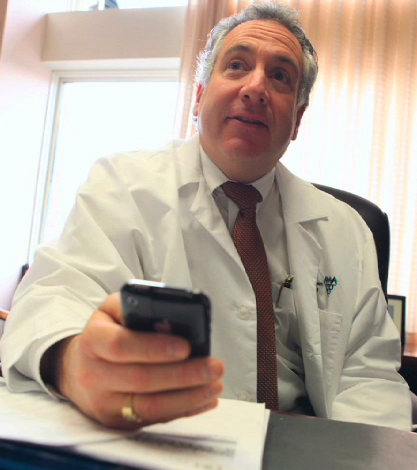 One of the drivers often cited as an impetus for wireless healthcare is the shortage of primary care doctors. While there is no replacement for face-to-face interaction with a primary care doctor, some mobile health tools can act as "health coaches" that can help keep patients following their care regimens, which could result in fewer visits to their doctor's office. USA Today recently had a report that listed a number of the relevant metrics associated with this alarming lack of primary care physicians. Here are some of the key facts and figures:
One of the drivers often cited as an impetus for wireless healthcare is the shortage of primary care doctors. While there is no replacement for face-to-face interaction with a primary care doctor, some mobile health tools can act as "health coaches" that can help keep patients following their care regimens, which could result in fewer visits to their doctor's office. USA Today recently had a report that listed a number of the relevant metrics associated with this alarming lack of primary care physicians. Here are some of the key facts and figures:
According to the American Academy of Family Physicians (AAFP), the number of U.S. medical school students who choose primary care has dropped 51.8% since 1997.
The AAFP predicts that there will be a shortage of 40,000 family physicians in 2020. The U.S. has about 100,000 family physicians currently, but will need 139,531 in 10 years. Currently, only half the number of doctors needed are entering the field.
Demand for primary care physicians is being driven by the 78 million Baby Boomers, who were born between 1946 and 1964, and who will begin turning 65 in 2011. The other group that could add to the strain on the system is the 47 million uninsured Americans -- the federal government is currently deciding whether it should extend insurance coverage to them.
According to Merritt Hawkins & Associates, medical school tuition and expenses range from $140,000 to $200,000, while a primary care doctor typically makes $120,000 to $190,000 a year. Neurosurgeons, on the other hand, make $530,000 a year or more.
For more, read the USA Today article here.
 One of the drivers often cited as an impetus for wireless healthcare is the shortage of primary care doctors. While there is no replacement for face-to-face interaction with a primary care doctor, some mobile health tools can act as "health coaches" that can help keep patients following their care regimens, which could result in fewer visits to their doctor's office. USA Today recently had a report that listed a number of the relevant metrics associated with this alarming lack of primary care physicians. Here are some of the key facts and figures:
One of the drivers often cited as an impetus for wireless healthcare is the shortage of primary care doctors. While there is no replacement for face-to-face interaction with a primary care doctor, some mobile health tools can act as "health coaches" that can help keep patients following their care regimens, which could result in fewer visits to their doctor's office. USA Today recently had a report that listed a number of the relevant metrics associated with this alarming lack of primary care physicians. Here are some of the key facts and figures:















